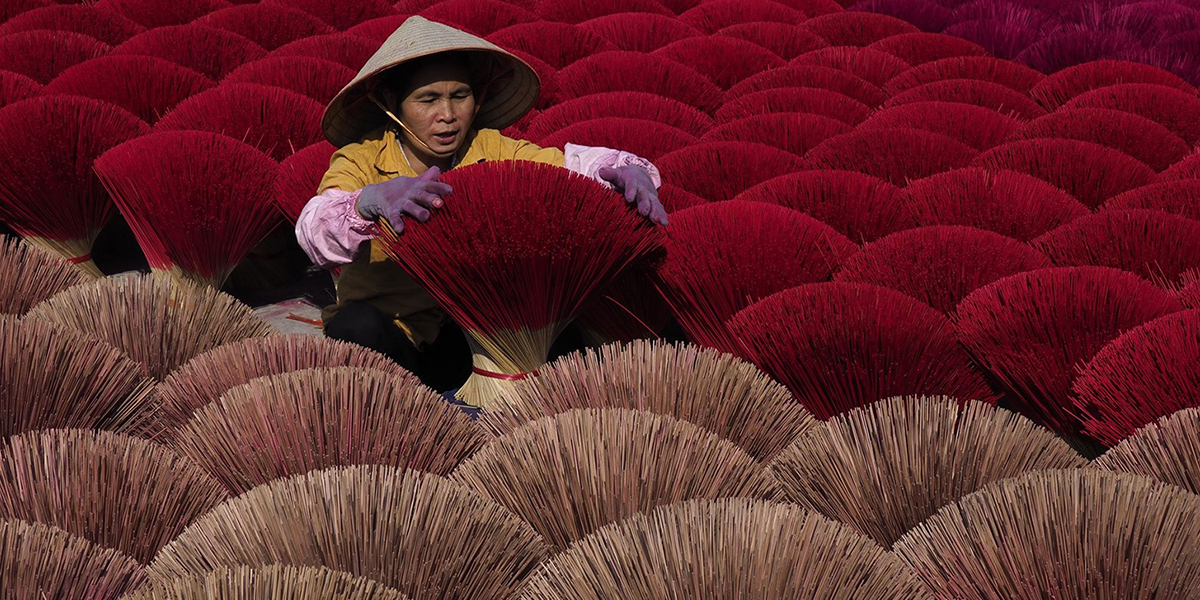I - The meaning of Vietnamese lotus flower in the local culture
1 - The meaning of lotus flower in Vietnam’s Buddhism
As one of the eight symbols of Buddhism, the lotus flower is associated with many activities and images of this religion, symbolizing the good qualities that people aim for. In the image of Buddhas or Bodhisattvas, it has become familiar for the lotus to be used as a seat, pedestal or a dharma treasure. In Vietnam, one can easily see Buddha images sitting on lotus pedestals or Buddhist lotus decorations, especially often appearing in temples. Buddhism takes the image of a Vietnam lotus flower as a representation of the 8 good spiritual qualities, including immaculateness, purification, patience, tranquility, candidness, benevolence, integrity, and karma:
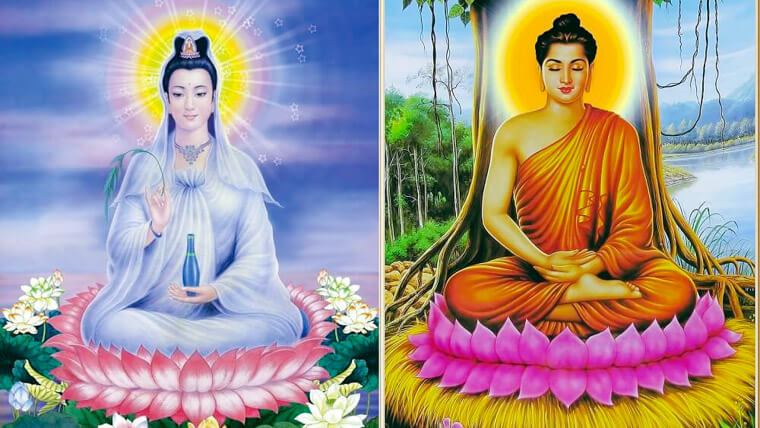
Lotus in Vietnamese culture - Source: quatang.vn
Immaculateness
The Vietnamese lotus flower grows in a dark, muddy place but is not contaminated by negative influences, suitable for the saying “near the mud, but lotus flower does not smell like mud”. This means that Buddhas always walk in the world among mortals, but they will not be influenced or inherited bad habits.
Purification
During the time when the lotus in Vietnam is growing and blooming, it will help clean the water around that place, making it become fresher, cleaner, and cooler. This means that wherever the Buddhas are, they will explain and teach, and enlighten the minds of those around them, bringing a happy and peaceful life.
Patience
This is one of the most important virtues of Buddhism, which manifests itself in the growth of the Vietnamese lotus flower. Germinated in the mud at the bottom of the pond, facing many difficulties and obstacles, the Vietnam lotus flower still rises above the water, opens its leaves, flowers, and emits a fragrant aroma.
Tranquility
From the lotus flowers, the exude fragrance is gentle, pure and pleasant, not too passionate or sweet. Just like Buddhas, those who always try to bring to life good values, sources of encouragement, and soothe your mind, in the form of nice words and good deeds.
Equanimity
From the time it blooms to the end, although the lotus flower in Vietnam emits a fragrant aroma, it is not disturbed by bees and butterflies that come to pollen. This shows the virtue of tolerance, knowing how to avoid immediate self-interests and bad habits, maintaining good compassion and keeping your soul pure.
Benevolence
In Buddhist teachings, Buddhas do not hold grudges, ready to forgive those who have harmed them if those people repent and ask for forgiveness. It is similar to Vietnamese lotus flowers, which have the fibers empty inside, like giving up sorrows and calculations, only keeping its honest self.
Integrity
This is quite simple, in its own right refers to the uprightness of the Buddha's virtues. The lotus flower with the image of rising straight out of the mud and above the water is a symbol of that virtue.
Karma
A unique feature of the lotus is that the flower and fruit appear at the same time, like the saying “you reap what you sow” in Buddhism. In addition to the above basic qualities, the Vietnamese lotus flower also carries many other values associated with the philosophical roots of Buddhism. For example, in the image of a lotus pedestal, the three petals at the bottom represent the Three Jewels - Buddha, Dharma, and Sangha. Meanwhile, the top five petals represent the 5 virtues including wisdom, equanimity, effort, purity, and mercy.
In addition, even though the lotus in Vietnam seems to be slender, it actually exists in 3 separate layers: the root lies in the dark mud, the stem lies in the vast clear water, and the flower stretches in the wide atmosphere towards the sun. Buddhism considers it as a symbol of 3 stages of life from the mundane world to heaven, just like a human being has to go through 3 stages to reach ultimate enlightenment and salvation.
Not only related to Buddhism, the Vietnamese lotus also has philosophical value on the theory of yin & yang and the five elements, serving as a basis for the Buddha station - the Flower Garland. Regarding the five elements, the lotus belongs to the “wood”, reaching the lake surface through the deep “water” element. The pink lotus flower belongs to the “fire” element, the yellow pistil belongs to the “earth” element and the white lotus stem belongs to the “metal” element.
Above are the reasons why lotus flowers appear a lot in the architecture of temples and monuments as an indispensable pattern, with unique and diverse stylized features.
2 - Vietnamese lotus flower in the mind of local people

Vietnam lotus lake - Source: vov.vn
Vietnamese people are passionate and have a special affection for the lotus because it is a symbol of the qualities of the people and the nation. This flower demonstrates the ability to adapt to the changes of the living environment and the eras, a strong spirit and vitality that always shine in all difficult and harsh situations. Vietnam lotus flower also symbolizes the simple but noble nature and personality of the Vietnamese people, acting as a witness associated with the heroic historical journeys of this nation.
Visiting Vietnam in the lotus season, anywhere in the three regions of North - Central - South, you can easily come across fragrant pink lotus ponds. In addition, in the homes of those who are nostalgic and traditional, there might be a slightly tall ceramic vase holding neatly and delicately placed and inserted lotus branches. Lotus flowers of pink and white interspersed with green leaves, beside the hot teapot, the scent of lotus mixed with tea creates an ethereal and fresh atmosphere.
II - The uses of Vietnamese lotus flower in daily life
Lotus in Vietnam is a plant that can make use of most parts, from decorative purposes to cuisine and medicine, using everything from lotus leaves, lotus stamens, lotus seeds, etc. Vietnamese people are very skillful and creative in processing lotus products to make tea, medicine, dishes, lotus silk, and so on.
1 - Lotus leaf
Looking like a fan, the lotus leaf is slightly round with a diameter of about 30 - 60cm, the leaf edge is slightly wavy. The upper surface is glossy, water-resistant, with a slightly yellowish-green color, while the lower surface of the leaf is grayish brown, rougher with many stretching veins. The central part of the leaf has large veins like the spine of the leaf, very brittle and easy to break. Fresh lotus leaves are harvested in the summer and have a characteristic aroma and bitter taste.
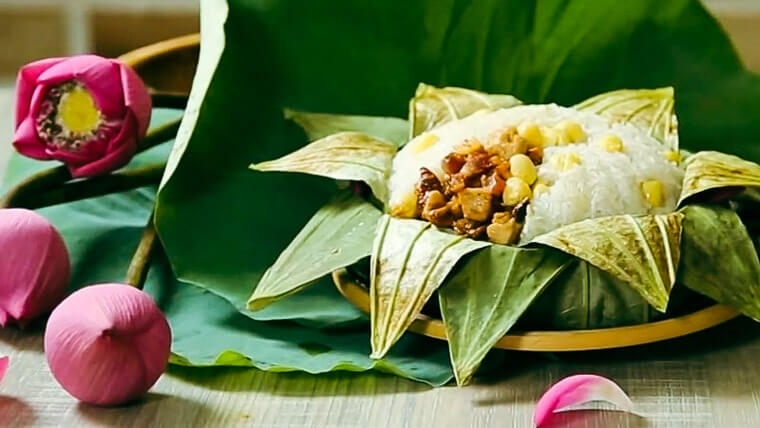
Vietnamese lotus has many uses in daily life - Source: dienmayxanh
Lotus leaf is an ingredient that is present in many delicious traditional Vietnamese dishes such as Banh chung, steamed rice with lotus leaves, grilled fish with Vietnam lotus leaves,… The sweet aroma and flavor, as well as the color of lotus leaves contribute to making the dish more attractive and unforgettable. The image of lotus leaves wrapped around handfuls of green sticky rice also creates a very unique culinary culture of Hanoi.
According to traditional medicine, dried lotus leaves have many good effects such as curing insomnia, eye pain, clearing heat, detoxification, anti-obesity, etc. For example, the drinkable water extracted from squeezing washed young leaves or fresh leaves with certain herbs can help rehydrate and treat dehydration. Lotus leaves can also be chopped and mixed with other vegetables, or soaked in boiling water to drink gradually.
2 - Vietnamese lotus stamens
The lotus stamen has long been used by Vietnamese people to make tea, medicine and functional food. It has fibers 1 - 1.5 cm long, light yellow-brown color, with white rice grains at the tip, which is usually cut to marinate with tea leaves to make the famous Vietnamese lotus tea. Meanwhile, when the lotus in Vietnam blooms in summer, the stamens are harvested and dried in the shade, which can be mixed with other medicinal plants or drinking water, offering benefits such as anti-ulcer, anti-hemorrhagic, analgesic, antibacterial, ...
3 - Vietnam lotus seed and its core
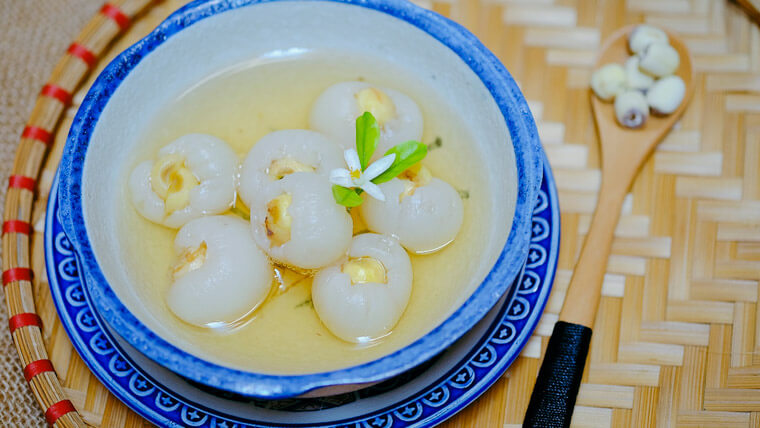
Lotus seed desert - Source: vnexpress
Lotus seeds are located in the ovary of the lotus, looking yellowish-white and round like a marble, wrapped in a green cover. In traditional Vietnamese medicine in particular and Oriental medicine in general, Vietnamese lotus seeds are considered as a valuable ingredient and contain many nutritional values. It is delicious and nutritious food that can cure diseases such as weakness, neurasthenia, insomnia, and indigestion,... Lotus seeds do not contain sugar but still have a sweet taste, which suits many people's preferences.
You can directly eat lotus seeds as a snack or roast fresh lotus seeds like popcorn into a golden brown color. There are many Vietnamese dishes that also use it such as chicken stew with lotus seeds, stewed lotus seeds with Northern medicinal herbs, lotus seed porridge, sugar-coated lotus seed, lotus seeds wrapped in longans sweet soup, ...
The lotus heart is the middle part of the lotus seed, with a characteristic green color, quite like a young bud that has not yet grown. Vietnam lotus seed core often has a slightly bitter taste, but it is not too difficult to swallow as it still has an elegant taste and aroma. Like other parts of the Vietnamese lotus, it has many remarkable uses such as improving heart conditions, clearing heat and sedating.
The simplest and most common is to use lotus heart to make tea and you can add longan to reduce the bitterness, as well as combine with other medicinal herbs such as licorice, honey, chrysanthemum, goji berry,… It is recommended to drink this tea when it is still warm and after dinner, about 1-2 hours before going to bed, when your brain is fully rested and relaxed, helping you easier fall asleep. Although the lotus seed core is considered a panacea for health, you need to pay attention to processing and using it properly to suit the actual condition of the body, avoiding abuse and affecting health.
Note: Lotus seed price in Vietnam is about 400,000 VND/kg ($17.3)
4 - Vietnamese lotus stems and roots
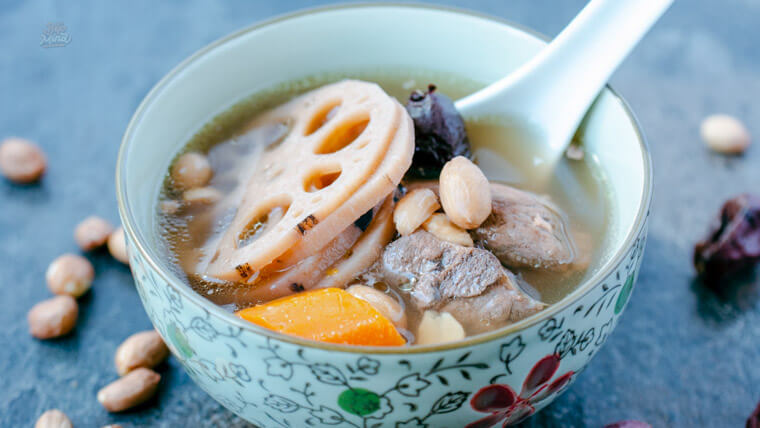
Lotus root soup - Source: mia.vn
Usually located close to the base of the lotus tree, the lotus stem is the youngest part of the lotus leaf stalk, which is crispy, milky white, and consists of many small sticky tubes with a cool feeling. When the young lotus leaves have just grown and floated to the surface of the water, the harvesters will use their hands to run along the lotus leaf stalk down to the root, gently pulling and breaking it to get the most delicious part. Many people mistakenly think that lotus stem and lotus root are two completely different parts, but actually the lotus root is the lotus stem that gets harvested after growing into a large tuber.
As a cooking ingredient, Vietnam lotus root can be eaten raw like a fruit or made into delicious rolls or salads such as lotus stem and pig ear salad, Vietnamese lotus root with shrimp and meat summer rolls, etc. It can also be cooked into very nutritious dishes including stir-fried beef with lotus root, lotus root sweet soup, lotus root stewed with pork ribs, lotus root and mushrooms hot pot, … If you’re lucky to choose a fresh lotus root, the dish will be cooked more quickly, coming out with a very sweet, bold, attractive taste and aroma.
Not only is it a rustic food familiar to the majority of Vietnamese people, but lotus root is also a medicine containing various nutrients, beneficial for health and curing many diseases according to Eastern medicine. Vietnamese lotus stems have a sweet taste, offering the effects of clearing heat, detoxifying, filtering blood, cleaning the intestinal tract, treating bad breath and nasal congestion, improving skin problems, and so on. For women specifically, eating lotus root after giving birth can help calm and reduce stress, preventing postpartum depression. You can eat lotus root raw or boil it to get water to drink every night, helping you sleep better and deeper.
The lotus in Vietnam is colorful and fragrant but in a very gentle way, symbolizing purity, holiness as well as indomitable tenacity in preserving the national cultural quintessence of the Vietnamese people. With the pure beauty, tenacious vitality and the wonderful uses of the Vietnamese lotus flower, it is understandable why many people mistakenly believe that the lotus is the national flower of Vietnam, even though this country has yet to have one







.jpg) — Ha Bich
— Ha Bich



























